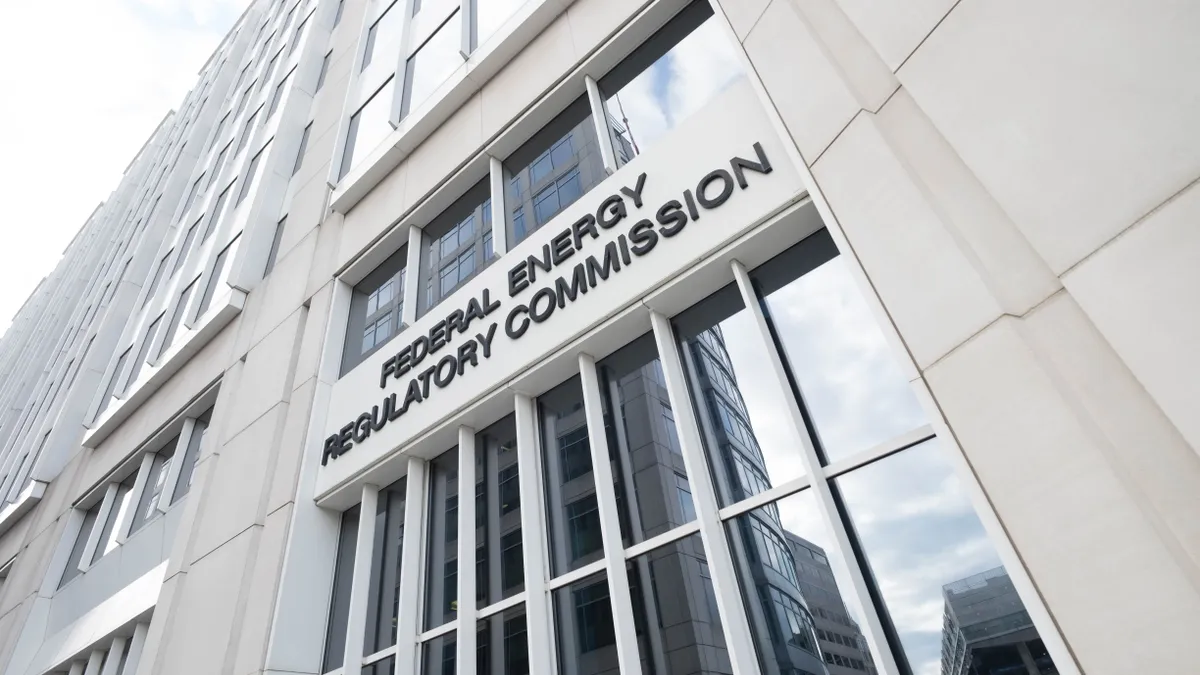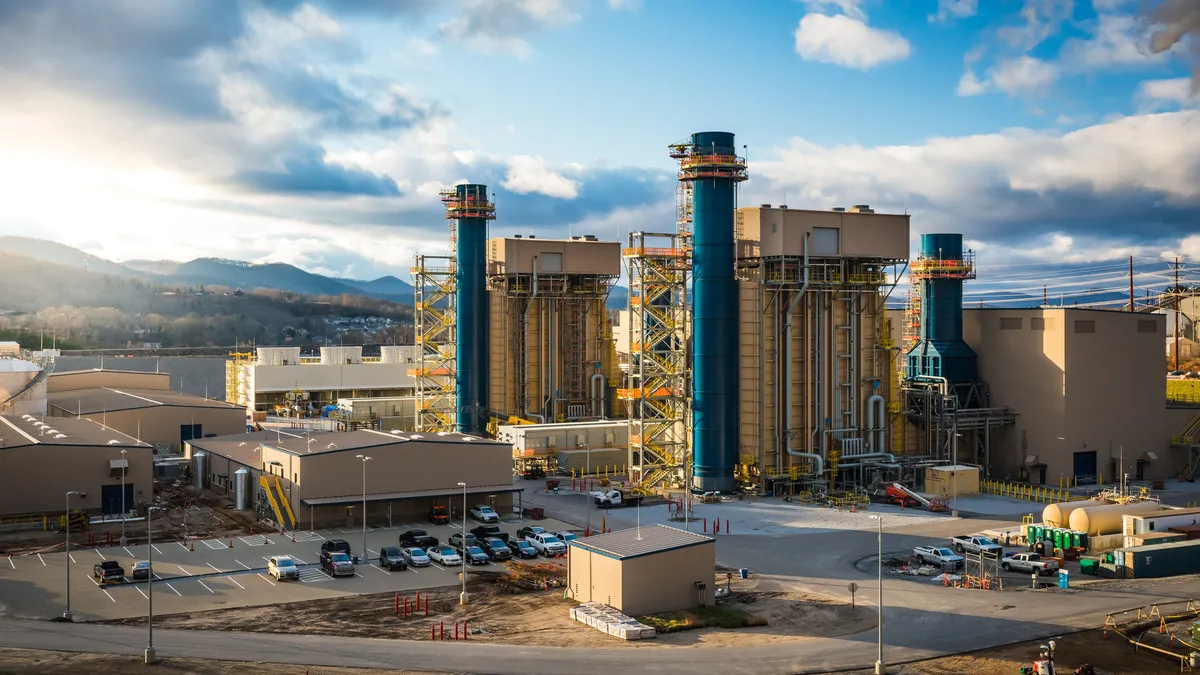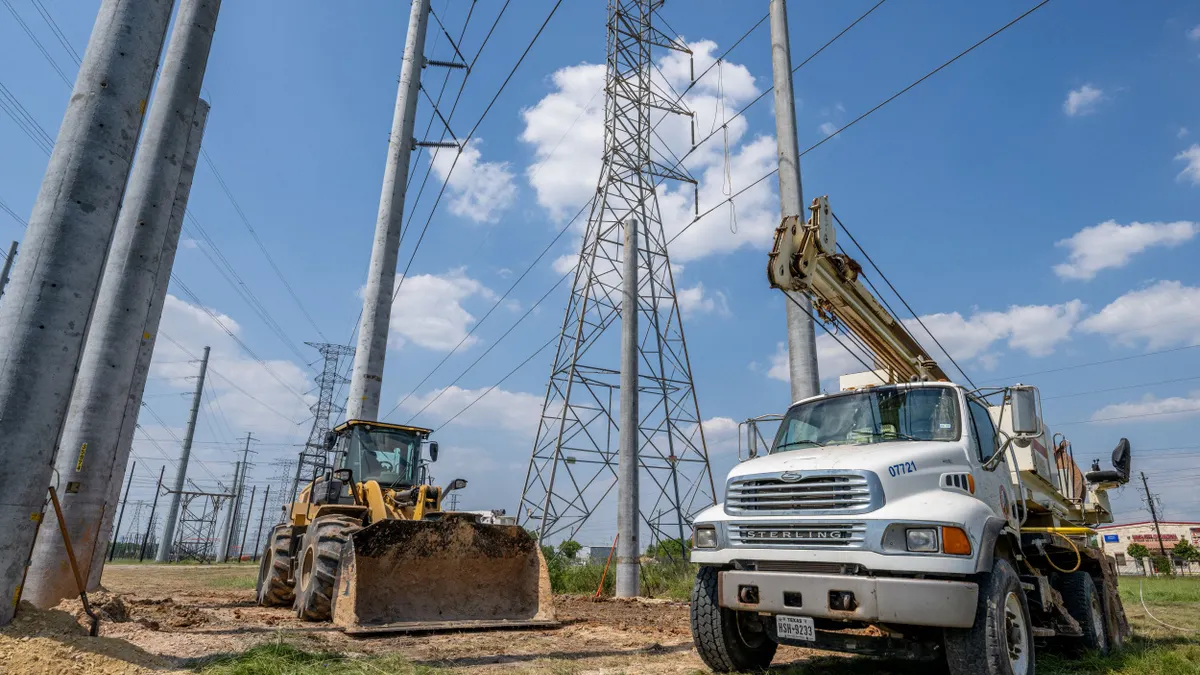This is the third piece in Utility Dive's four-part 2022 outlook series. For the other stories in the series, please visit our 2022 outlook page.
The Federal Energy Regulatory Commission has a stacked agenda this year that includes topics central to the ongoing energy transition. The top items are transmission planning, cost allocation and interconnection reform, as well as power market reforms and revisions to how the agency reviews proposed natural gas infrastructure, according to experts.
The issues were queued up last year through technical conferences, the issuance of a transmission-focused advance notice of proposed rulemaking (ANOPR) and various requests for stakeholder comments.
FERC Chairman Richard Glick, who was elevated to the position a year ago, appears eager to move forward as quickly as possible on those main issues, according to agency observers.
"It seems like there's a willingness to push pretty hard to move them through, if not on an expedited basis, at least in a pretty brisk fashion," former FERC Commissioner Tony Clark said.
FERC's new Democratic majority
In a major change to the dynamics at FERC, Glick for the first time is working with a Democratic majority. Last year, FERC had a 3-2 Republican majority until former Commissioner Neil Chatterjee, a Republican, left the agency on Aug. 30.
The absence of a commissioner contributed to some high-profile 2-2 deadlocks that led to effective approvals of the PJM Interconnection's minimum offer price rule replacement and the Southeast Energy Exchange Market.
The Senate in mid-November unanimously confirmed Willie Phillips Jr. to fill FERC's vacant seat. After getting up to speed at the agency, Phillips started voting on orders earlier this month.
"This is the first time that Chairman Glick has a majority," Tyson Slocum, director of Public Citizen's energy program, said. "So I think we're going to see a much different FERC in 2022 than we saw last year, because with a three to two edge, the chairman is able to not just put together an agenda, but to implement it."
Glick, Phillips and Allison Clements are FERC's Democratic members and commissioners James Danly and Mark Christie are its Republican members.
Glick intends to try to reach agreements with his colleagues on potential decisions from the agency. "My goal is always to start with trying to make sure we can try to get all the votes," Glick said during a media briefing in November.
FERC leaders typically strive to have unanimous orders, according to Clark, now a senior advisor at Wilkinson Barker Knauer, a law firm. "My hope is that having the fifth commissioner actually brings folks together in an effort of compromise so that maybe one commissioner gives a little here and another gives a little to end up with orders that are more legally durable," he said.
A lot of these FERC issues aren't partisan ... but the way things shake out, having a third Democrat, and therefore a majority, is just going to make Chairman Glick's job a heck of a lot easier.

Tyson Slocum
Public Citizen energy program director
Slocum expects Glick will be able to get his agenda through FERC, noting that Phillips had a successful track record as chairman of the District of Columbia Public Service Commission.
"A lot of these FERC issues aren't partisan and shouldn't be partisan, but the way things shake out, having a third Democrat, and therefore a majority, is just going to make Chairman Glick's job a heck of a lot easier," Slocum said.
Slocum expects FERC will issue "a flurry of big ticket rulemakings" in the next four months.
In a sign that may bode well for the workload that will come with the expected agenda this year, FERC has successfully managed the disruptions caused by Covid-19, such as working from home, according to Slocum.
"The fact that FERC continues to churn out all of these orders, process all of these filings and, from where I'm sitting, do so without seemingly any change from pre-pandemic to mid-pandemic, is pretty impressive," Slocum said.
FERC is a key player in the energy transition
With its oversight of interstate transmission and wholesale power markets, FERC, an independent agency, has a major role in the energy transition.
"FERC's regulation is central to the resilient, reliable future grid that's already developing," John Moore, director of the Sustainable FERC Project at the Natural Resources Defense Council, said.
Potential changes to the transmission system are driven by the growth of renewable energy, especially in areas that are far from major population centers, according to Moore.
Other developments that are driving a focus on transmission planning include the development of offshore wind farms and the shift away from fossil fuels for cars, trucks and buildings, which will drive up electricity use, Moore said.
The transmission system will need to become more efficient to handle the changes, according to Moore. "FERC is very much a part of that, given its regulation of the bulk power system and its oversight of regional markets in most of the country at this point, and the likelihood that we'll see ... at least one more power market evolve in the West," Moore said.
Transmission: a lynchpin for the energy transition
Perhaps the top item on FERC's agenda this year, according to analysts, is possible reforms to transmission planning, cost allocation and the generation interconnection process. FERC started the rulemaking process last year by issuing an ANOPR and taking two rounds of public comments on multiple issues.
Glick aims to issue a proposed rule early this year, with a final rule coming before 2023, he said in December. FERC may break out some of the issues into different proposals, according to Glick.
Separating the issues into several proceedings may make sense, according to Clark.
"It seems like there's also some early wins you could get in terms of bringing the commission together on a few things, and the one that you always hear about is queue reform," Clark said, referring to the backlog of proposed generating projects seeking to interconnect to the grid.
FERC may look for "near term" opportunities to identify best practices in generator interconnection processes that could be adopted as national standards without disrupting the progress some regional transmission organizations (RTOs) and independent system operators (ISOs) are making in their stakeholder processes, according to Jeff Dennis, Advanced Energy Economy managing director and general counsel.
Dennis expects FERC to release a proposed rule in the first quarter this year.
"There's good agreement in the record that the commission needs to put in place more requirements for planning regions to plan transmission holistically and to plan it with an eye towards multiple drivers of transmission," Dennis said.
Besides reliability, economic and public policy drivers, which are typically "siloed" in transmission planning, grid operators need to also consider issues such as extreme weather and electrification in their planning efforts, according to Dennis.
Grid operators should capture the various needs for new transmission in a single process so all the benefits of new transmission facilities are identified, and the costs are allocated appropriately, Dennis said.
The challenge will be how prescriptive FERC wants to be compared with setting high-level guidance for the regions, he added.
Energy transition drives possible market reforms
FERC will continue to review market rules to make sure they don't prevent emerging technology such as energy storage from participating in wholesale power markets while also ensuring the electric system is reliable, according to Dennis.
FERC held a series of technical conferences last year on issues such as capacity markets, energy markets and ancillary service markets, teeing up possible action this year, Dennis said.
FERC may consider pushing bigger, structural market reform this year, according to Dennis.
"Maybe changes that would de-emphasize the capacity market and emphasize putting more of the revenues that the markets provide to generators to ensure they're available and reliable into energy and ancillary services markets," Dennis said.
You're going to have to have pretty fundamental [market] redesign, because you have to figure out a way to compensate those generation resources that are needed during certain parts of the day and throughout the year.

Tony Clark
Former FERC commissioner
Clark sees the potential for major market reforms to reflect the changing generation mix, with wind and solar, which have no fuel costs, effectively agnostic to price signals.
"It changes the entire underpinning of how these markets were designed and the commission has been dealing with it for several years," Clark said. "You're going to have to have pretty fundamental [market] redesign, because you have to figure out a way to compensate those generation resources that are needed during certain parts of the day and throughout the year."
Sustainable FERC's Moore expects FERC will consider making sure grid operators accurately value the reliability and resource adequacy contributions of renewable energy and energy storage.
"Figuring out how to maximize the value and contributions of renewable energy and energy storage to reliability, resilience and resource adequacy will be a big area for FERC to work on this year," Moore said.
Also, FERC will be reviewing plans from grid operators describing how they plan to implement Order 2222, a measure that aimed to open up wholesale markets to distributed energy resources.
The California Independent System Operator and New York Independent System Operator have filed their plans while ISO New England is expected to file its plan in February, with the PJM, the Midcontinent Independent System Operator and the Southwest Power Pool following in April, according to Dennis.
"It's a really important opportunity for the commission to take the next step in the evolution of the markets to capture flexibility on the demand side, and also to capture some of the value out of trends that it has identified," Dennis said, noting electric vehicle chargers and the vehicles themselves could be grid resources.
FERC eyes changes to how it reviews gas infrastructure
In another area that could affect the power system, FERC is considering updating its criteria for reviewing proposed natural gas infrastructure projects, standards that haven't been significantly changed since 1999.
Possible changes could affect how FERC decides if the infrastructure is needed, how proposed facilities would affect the climate, how environmental justice communities near the infrastructure could be affected and how greenhouse gas emissions could be mitigated.
So far, there appears to be disagreement on the issues among FERC commissioners, with Glick and Clements on one side and Christie and Danly on the other, according to Clark.
"There's a lot and it's being done in a pretty hotly charged political environment as it relates to pipelines," Clark said. "Capitol Hill is interested, the industry is very interested, environmental stakeholders are interested … it has the potential to be very controversial."
Increasing the public's role at FERC
FERC will continue to roll out its new Office of Public Participation (OPP) this year, according to observers.
"Conducting public outreach and education, improving ease of access to documents filed in the commission's online database (eLibrary), advancing intervenor funding processes, and creating more opportunities for the Commission to hear from members of the public impacted by FERC's decision-making are key priorities for OPP and the commission at large," Glick said in a Jan. 11 letter to a group of House lawmakers.
Glick said he hopes FERC will issue a rulemaking in the "coming months" to address mechanisms to pay intervenors for the cost of participating in the agency's processes.
The office won't likely be in full swing until 2023, according to Slocum.
Initially, the office will likely play a larger role on gas infrastructure issues, which tend to be localized, compared with electricity cases, Moore said.
"It's going to help level the playing field, which means bringing more voices into FERC," Moore said. "All the commissioners, whether or not they say it explicitly in a final rule, will get a better appreciation of the effects of their rules on a broader swath of stakeholders who are virtually unrepresented at FERC and the RTOS."























